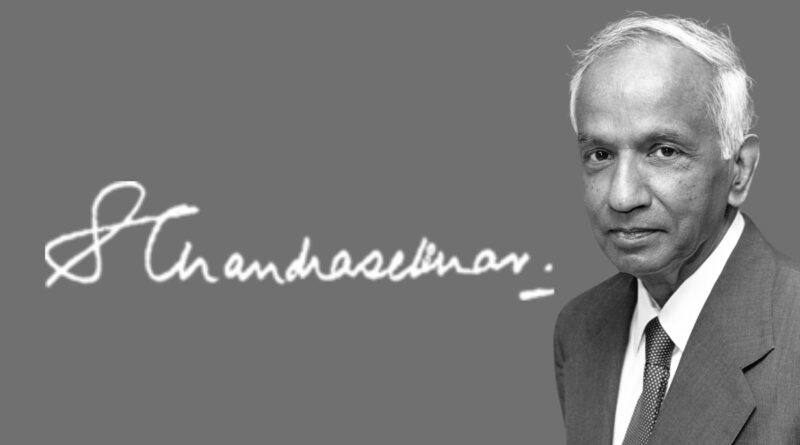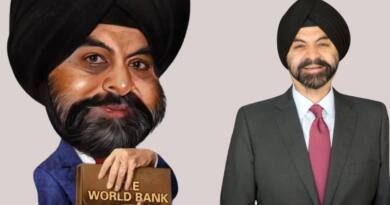One Of The Best Stars From The Indian Sky Revisited
By Melwyn Williams | Cover Story | The WFY Magazine , October 2025 Edition |
From a shipboard calculation to a century of influence, Chandrasekhar’s life shows how disciplined minds and fair institutions turn talent into legacy.
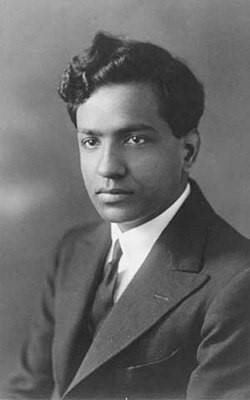
Subrahmanyan Chandrasekhar and the Making of Modern Astrophysics
A young Indian on a 1930 voyage to Cambridge worked out a limit that still governs how stars die. The same mind then wrote the books, trained the people and edited the journal that made astrophysics precise. His path through migration and bias offers a practical playbook for today’s diaspora: method first, standards high, institutions accountable.
Introduction: Why Chandra still matters
Every generation discovers a scientist whose work changes both the questions we ask and the language we use to answer them. For readers of the Indian diaspora, Subrahmanyan Chandrasekhar is that scientist. He turned the fate of dying stars into a precise calculation, then spent six decades reshaping the fields that orbit it. His science travelled from a ship’s deck in 1930 to the heart of the best observatories on Earth. The limit he derived as a teenager is now typed into undergraduate notes, coded into supercomputer simulations, and checked against observations of supernovae, neutron stars, and black holes. The same mind that gave astrophysics a mass threshold also gave it methods, textbooks, journals, students, and a standard of exactness that later generations came to take for granted.
There is another reason to revisit him now. Chandrasekhar’s career was a laboratory for the modern global scientist: trained across continents, shaped by mentors and sceptics, sometimes celebrated, sometimes sidelined, always working. He navigated migration, discrimination, and institutional politics while building a body of work that remains astonishing for its range. He showed that scholarship can be rigorous and beautiful at the same time, that a life in science is a craft, and that the Indian scientific imagination could be calmly international and deeply Indian at once. All of this gives his story a contemporary resonance for families whose children are learning physics in Delhi or Dubai and dreaming of labs in Cambridge or Chicago.
This cover story brings together what we know from standard biographies and archives with a view to the present. It follows the chronology, but it is not a simple timeline. It is an investigation into method and mindset, into the systems that help or hinder talent, and into the practical lessons that the diaspora can apply today.
The early spark: Lahore, Madras, and the Presidency College forge
Chandrasekhar was born in Lahore in 1910, one of ten children in a Tamil Brahmin family. The household valued books, languages, mathematics and music. Home tutoring came first, then the Hindu High School in Triplicane, and then Presidency College, Madras, where he wrote his first research paper while still an undergraduate. The family connection to science was real but never deterministic. His maternal encouragement and his uncle C. V. Raman’s example created a climate in which serious study felt ordinary. Within this climate, Chandrasekhar began to do something that would define his life: he read across fields, absorbed technique before theory, and pushed every problem until it yielded a general structure.
In these formative years he also learnt what would become a hallmark of his style: the will to systematise. He approached topics as a builder of frameworks. He wanted to know not only what a calculation delivered but also how it fitted inside a larger pattern. That impulse would later explain the rhythm of his career. He would spend a decade on one subject, drain it to the dregs, write the book, and move to the next.
The calculation at sea: how a teenager set the fate of dying stars
The image is now part of scientific folklore. In July 1930, bound for England on a Government of India scholarship to Trinity College, Cambridge, a nineteen-year-old worked through papers on electron degeneracy and stellar structure. He extended Ralph Fowler’s quantum mechanical treatment of white dwarfs by adding special relativity for the electrons. The mathematics led to a conclusion with the clear force of a verdict: there is a maximum mass for a white dwarf. Beyond that mass the electron degeneracy pressure cannot balance gravity. The star must take another path, towards collapse and a different end-state.
That number is now printed everywhere: about 1.44 times the mass of the Sun. The Chandrasekhar limit is more than a number. It is a bridge that links quantum mechanics to gravity, the individual electron to the global destiny of a star. It is the kind of result that makes a subject feel ordered, as if nature had deliberately left a signpost. Later research confirmed the implications: white dwarfs exist below the threshold; more massive stellar cores must become neutron stars or black holes after their supernovae. The way we read the light curves of supernovae, the way we build cosmic distance ladders, and the way we classify the end stages of stars all hold the fingerprints of this limit.
For students and parents in our community, there is a useful lesson hidden in the romance. The calculation did not appear out of thin air. It grew from habits he had already formed: attention to contemporary literature, comfort with mathematical technique, respect for the emerging quantum theory, and curiosity that neither idolised nor ignored senior voices. It is fashionable to call such achievements genius. Chandra would have called it work.
Cambridge, Copenhagen, Göttingen: apprenticeship among giants
At Cambridge he studied under Fowler, engaged with E. A. Milne’s stellar structure, and then spent time with Max Born in Göttingen and with the Copenhagen group around Niels Bohr. He calculated opacities and stellar atmospheres, learnt the new physics at its source, and hardened his style into something both spare and confident. The training shows in his early papers: short, tightly reasoned, aware of context, and written as if they were exercises in clarity.
What came next is now a cautionary tale in scientific sociology. In January 1935, Chandrasekhar presented the full argument for the mass limit at a Royal Astronomical Society meeting. Arthur Eddington, the most influential astrophysicist in Britain, spoke immediately after and dismissed the conclusion in public. He would continue to argue against it. Younger researchers took note. It is easy to underestimate how discouraging such opposition can be for a scholar at the beginning of a career. In this case the mathematics was right, and the field would catch up two decades later. But in the near term, doors in Britain closed.
For young scientists who feel bypassed by fashion or gatekeeping, the episode is important. It shows that correctness does not guarantee recognition, that scientific communities are human communities, and that persistence matters. It also highlights the role of institutions and allies. Without a receptive environment elsewhere, important ideas can stall.
Crossing the Atlantic: Yerkes, Chicago and a working life
Visits to Harvard and an invitation from the University of Chicago’s Yerkes Observatory in 1936 gave Chandrasekhar the environment he needed. He accepted the position, returned to India to marry Lalitha Doraiswamy, and then moved to Williams Bay, Wisconsin. He would remain within the Chicago ecosystem for nearly six decades, rising from assistant professor to full professor by the age of thirty-three, and later to the Morton D. Hull Distinguished Service Professor of Theoretical Astrophysics.
Life at Yerkes imposed its own constraints. The community was small, the winters harsh, and the commute to campus long. He taught formal, highly mathematical courses that mirrored his research topics, and he drove to Chicago at weekends to teach further classes. The picture that emerges from students and colleagues is consistent: he was exacting, rhythmic in speech, intolerant of trivial interruptions, generous with serious questions, and unwavering in standards.
Two institutional roles reveal his influence beyond research. From 1952 to 1971, he edited The Astrophysical Journal, turning it into a global flagship. He also supervised a long list of doctoral students who would lead fields in later decades. His laboratory was a seminar room, a blackboard, and a manuscript in progress.
This is also where the diaspora perspective matters. He faced forms of discrimination and scepticism that were both overt and subtle. He was offered a research associate position rather than a lectureship at first, blocked from certain teaching by prejudice until higher authorities overruled it, and occasionally isolated by colleagues who did not value pure theory. Backing from enlightened administrators and his own steady output helped him hold his ground. His resilience, and Lalitha’s quiet partnership, turned a potentially fragile mid-career into a platform for a remarkable second act.
A career built in deliberate decades
Chandrasekhar described his work as a sequence of planned campaigns. Each decade he would enter a field, push on multiple fronts, publish a series of papers, and then write the definitive monograph. The list reads like the table of contents of mid-twentieth-century theoretical astrophysics and applied mathematics.
- 1929 to 1939: stellar structure and white dwarfs, culminating in the limiting mass and in a systematic treatment of polytropes and stellar interiors.
- 1939 to 1943: stellar dynamics and Brownian motion, with the introduction of the concept now called dynamical friction, a dissipative process that shapes the behaviour of stars in clusters and galaxies.
- 1943 to 1950: radiative transfer and the quantum theory of the negative hydrogen ion, subjects central to the physics of stellar atmospheres and the formation of spectral lines.
- 1950 to 1961: hydrodynamic and hydromagnetic stability, including turbulence, with treatments that were both general and calculable and that remain reference points for fluid dynamicists.
- 1960s: figures of equilibrium, the mathematics of rotating, self-gravitating ellipsoids, and then a deep engagement with general relativity.
- 1971 to 1983: the mathematical theory of black holes, resulting in a text whose clarity and completeness make it a classic.
- Late 1980s and early 1990s: colliding gravitational waves and a return to first principles through a re-exposition of Newton’s Principia for the mathematically literate reader.
Each of these programmes left tools that others now use. The H-function of radiative transfer, the Chandrasekhar number in magnetohydrodynamics, the Chandrasekhar–Fermi method for estimating magnetic fields in interstellar clouds, the equations that bear his name in kinetic theory and plasma physics, and the transformations and tensors that carry his signature; such artefacts of theory are used because they are useful. They are also used because they are clean.
For those who look for measurable impact, there are obvious markers. Chandrasekhar authored or co-authored roughly four hundred papers across a lifetime, supervised about forty-five doctoral students, and edited a major journal for nineteen years. He received the Nobel Prize in Physics in 1983 for his work on the structure and evolution of stars, the National Medal of Science in 1966, the Royal Society’s Royal Medal and later the Copley Medal, and numerous other honours across three countries. The third of NASA’s Great Observatories was named the Chandra X-ray Observatory in 1999, a sign that his name had moved from equation to instrument.
These statistics do not capture the whole. They sit atop a quieter fact, that his monographs on stellar structure, radiative transfer, hydromagnetic stability, and black holes became the books that researchers reached for first. They trained generations not only in content but also in method.
Between war rooms and classrooms: applied science and service
During the Second World War Chandrasekhar worked at the Ballistic Research Laboratory at Aberdeen Proving Ground in Maryland. He wrote technical reports on shock waves, blast reflections, and optimal shell bursts, and he applied hydrodynamics to problems of direct military relevance. The wartime interlude demonstrates a temperament that many in the diaspora recognise: a willingness to move where the work is needed, to contribute with skill rather than sentiment, and then to return to first loves when the emergency passes. Offers to join other national projects were delayed by security clearance issues, but the interlude had already shown that his mathematical craft could power disciplines outside astrophysics.
The Chicago years and the making of a community
If one were to draw a map of influence rather than a CV, the Chicago years would look like a dense network rather than a straight line. The network includes his students, colleagues in physics and astronomy, the authors he published as editor, and the readers he trained through his books. It also includes a partnership that deserves more attention: Lalitha’s role as companion, critic and cultural ballast. She declined to pursue a scientific career, choosing instead to create the conditions that allowed his work to unfold. She studied literature and music and lived to the age of one hundred and two. The shape of his life makes less sense without her.
From an institutional angle, his story also shows how a university can sustain a specialist. When the astronomy curriculum shifted in 1952 in ways that left him outside the formal teaching loop he had helped to design, the physics department invited him across, and he built a new base. This inter-departmental rescue is rarely discussed, but it is a clear example of how to retain talent. The lesson is portable: when structures change, find a way to keep the person.
The limit becomes a landscape: from white dwarfs to black holes.
By the 1960s and 1970s, observations and theory had converged. Supernova light curves, neutron star physics, pulsars, accretion disc models, and later X-ray binaries and gravitational wave detections all pointed to a universe where Chandrasekhar’s early reasoning was not merely plausible but necessary. When the first clear detections of gravitational waves from merging black holes arrived in 2015, they did more than confirm relativity in a new regime. They vindicated the long arc from an ocean liner calculation to a research programme that now occupies thousands of scientists. The global community of observers and theorists who work on compact objects and strong gravity inhabit a landscape whose first ridge line he sketched before his twenty-first birthday.
This is why the choice to name an orbiting X-ray observatory after him felt right. X-ray astronomy traces hot, violent places, and many of those places are powered by compact objects. The observatory’s images of supernova remnants, galactic centres and clusters convert the limit into colour.
Truth and beauty: the mind behind the mathematics
Chandrasekhar was not content to do physics; he wanted to understand why doing physics feels the way it does. His book Truth and Beauty: Aesthetics and Motivations in Science argues that scientific achievement has an aesthetic dimension. He writes of simplicity that is not simplistic, of symmetry that does not shout, of structure that is discovered, not imposed. He wrote this not as a philosopher looking in, but as a practitioner turning the instrument towards himself.
This matters for two reasons. First, it shows that a life in science can be philosophically articulate without losing rigour. Second, it gives parents and teachers something concrete to pass on to children who love both equations and the humanities. The supposed choice between art and science is often a false one. Chandrasekhar’s work, and the way he framed it, shows how they can be parts of the same desire for order.
A private sceptic with a public standard
In personal belief Chandrasekhar described himself as an atheist. He respected faith as a cultural force, but he saw the scientific enterprise as a self-sufficient method. He also insisted on etiquette in argument. He did not indulge mediocrity, and he did not romanticise struggle. This combination could intimidate students, but it also set a clear bar. He liked questions that were prepared and disliked those that were not. In an age that often confuses performance with substance, this preference feels bracing.
His editing of The Astrophysical Journal was consistent with this style. He looked for mathematical soundness, welcomed results that were right even if they were unfashionable, and kept the pipeline clean. The period during which he led that journal helped set the tone for international astrophysics.
The diaspora lens: what Chandrasekhar’s life teaches families today
What should parents, students, early-career researchers, and policymakers learn from this life?
First, depth is portable. Chandrasekhar changed institutions and countries, but he carried a disciplined method that travelled well. The method was simple to describe and hard to follow: master the mathematics, read the literature, choose a tractable but important problem, and work until the structure emerges. In the diaspora context, where families move between schooling systems and cultures, a transportable method is more useful than a string of brand names.
Second, institutions can be repaired by the people inside them. He encountered prejudice and narrowness, but he and his allies also modified those structures. Senior leaders intervened when needed, departments adjusted, and journals evolved. The message to our readers who run labs and programmes is straightforward. Use your post to protect talent, even when it is inconvenient. One administrator’s courage in the 1930s and 1940s changed the trajectory of a career that would later change a field.
Third, research thrives on well-timed pivots. He did not cling to topics after he had systematised them. He moved on. This prevented stagnation and cross-pollinated methods between areas. Young researchers can plan for such pivots; funding bodies can design fellowships that allow them.
Fourth, excellence is a household economy. Lalitha’s role shows that the conditions for sustained concentration are social as well as personal. Universities and funders can learn from this by building better support for families, visas and housing. It is not enough to recruit a scientist; one must make it possible for them to live.
Fifth, general education matters. His late project on Newton’s Principia and his essays on aesthetics show a mind delighted by explanation for its own sake. Good school systems do not squeeze curiosity too early into narrow channels. For parents anxious about admissions and rankings, there is comfort here. Let your children read widely. It is not a detour; it is preparation.
Facts and figures: the measurable legacy
- Birth and death: Born 19 October 1910 in Lahore; died 21 August 1995 in Chicago at the age of eighty-four.
- Citizenships: British India until 1947, Indian until 1953, and United States thereafter.
- Education: BSc (Honours) in Physics, University of Madras; graduate work at Trinity College, Cambridge, leading to a PhD in 1933.
- Early honours: Trinity College Prize Fellowship from 1933 to 1937, only the second Indian to be elected after Ramanujan.
- Career: University of Chicago from 1937 to 1995, including Yerkes Observatory; Morton D. Hull Distinguished Service Professor; editor of The Astrophysical Journal from 1952 to 1971.
- Research output: About 400 papers across astrophysics, relativity, fluid dynamics and applied mathematics; around 45 doctoral students trained across five decades.
- Nobel Prize: Physics, 1983, shared with William A. Fowler, for theoretical studies on the structure and evolution of stars.
- Other major honours: Royal Medal (1962), National Medal of Science (1966), Padma Vibhushan (1968), Copley Medal (1984).
- Named after him: the Chandrasekhar limit (~1.44 solar masses), the Chandrasekhar number in magnetohydrodynamics, the Chandra X-ray Observatory launched in 1999, the asteroid 1958 Chandra, and the Himalayan Chandra Telescope.
- Teaching and service: Delivered roughly a thousand colloquia, served on major committees, and produced monographs that remain standard references.
- Wartime service: Ballistic Research Laboratory, Aberdeen Proving Ground, producing technical reports on shock and blast dynamics.
These data points are consistent with established records and the published historical summaries of his career.
The contested moment: science, status and the Eddington dispute
No overview of Chandrasekhar can ignore the episode with Arthur Eddington. It is often told as a story of the young being crushed by the old. A fair reading is more nuanced. Eddington had built a towering reputation through observations and theory. He was also protective of a vision of the stellar end-state that his own work supported. The young visitor’s calculations contradicted that vision. The disagreement unfolded in public, and it hurt.
Why revisit this now? Because the episode speaks to our times. Many young scientists from India and the wider Global South enter established centres where reputations are local currency. They bring skills and energy, and they can threaten established narratives.
Chandrasekhar’s survival strategy is instructive. He did not turn the dispute into a personal crusade. He did the next piece of work, accepted an appointment where his mathematics would be judged on merit, and trusted that the field would eventually correct itself. It did.
There is, however, a responsibility on the host institutions too. Constructive disagreements make science stronger, but public belittlement deters talent. The lesson for senior scholars is to criticise ideas without humiliating people. The lesson for funders is to diversify review panels and to protect contrarian excellence when the case is clear.
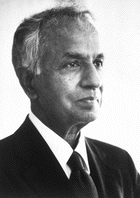
The craft of clarity: why his books still teach
Textbooks can fossilise a field or revitalise it. Chandrasekhar’s volumes belong to the latter class. An Introduction to the Study of Stellar Structure built a bridge between polytropic models and realistic interiors. Radiative Transfer gave astrophysicists a toolkit that chemists and engineers also adopted. Hydrodynamic and Hydromagnetic Stability armed generations with methods to handle instabilities from laboratory plasmas to the interiors of stars. The Mathematical Theory of Black Holes took a subject that intimidated and made it navigable. Late in life, Newton’s Principia for the Common Reader returned to the foundations with a teacher’s patience. These books do something rare: they show readers how to think, not just what to know.
For diaspora students who often train in competitive exam cultures heavy on problem sets and light on structure, these texts can be liberating. They invite the reader into the writer’s head. They model how to build a subject from first principles without losing the ability to calculate.
Beyond the lab: culture, character and the long marriage
Personal portraits often alternate between two images: a stern logician and a warm mentor. The reality was more integrated. He could be demanding in seminars and courteous in private. He loved classical music, walks, and careful conversation. He was precise about time, both in schedule and in style. He presented himself with a quiet dignity that reflected a classical sense of responsibility.
The long marriage to Lalitha is part of this portrait. It was a partnership formed in the face of distance, tested by relocation, and sustained by shared intellectual respect. Her decision to step away from a physics career was her own, and it made room for his ascetic working rhythm. Families today do not need to copy that choice to appreciate the principle it reveals: high achievement rarely happens alone, and the invisible labour that supports it deserves recognition.
Chandra for the twenty-first century: what would he work on now?
It is tempting to imagine how Chandrasekhar would approach present frontiers. The guess is not difficult because his pattern was consistent. He would choose a domain where mathematics could clarify structure and where observation or experiment could test it. Several candidates fit.
- Gravitational wave astrophysics. The detection of waves from black hole and neutron star mergers has opened a regime that plays to his strengths. He could formalise the dynamics of tidal effects, precession, and eccentricity, or sharpen the perturbation theory around spinning black holes in ways that improve waveform models.
- Radiation hydrodynamics of supernovae. The old interests in radiative transfer and stability could combine to address deep questions about explosion mechanisms and their observable signatures.
- Magnetised turbulence in accretion flows. His hydromagnetic stability work would adapt naturally to the magnetorotational instability and the transport of angular momentum in discs around compact objects.
- Mathematical cosmology. His taste for differential geometry and exact solutions could lead to clean results on anisotropies, inhomogeneities or the stability of cosmological models.
This is not speculation for its own sake. It underscores a point useful to educators and funders: train minds in method, not trend. Good methods will find good problems.
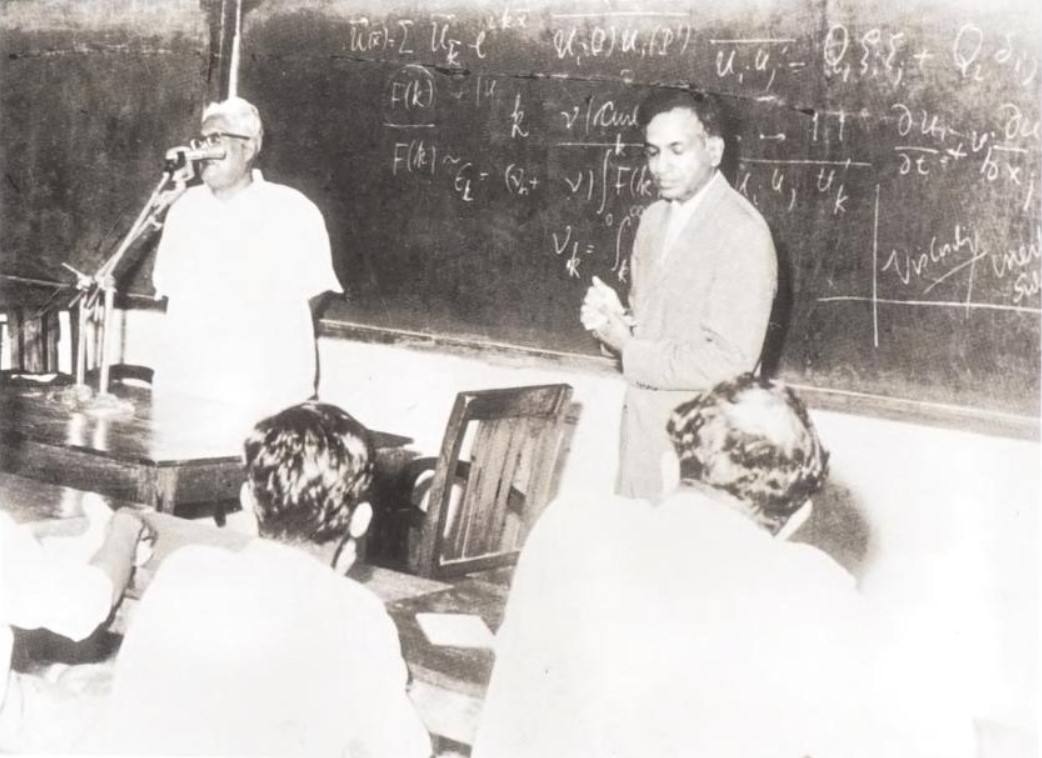
Policy and practice: clear solutions for today
A cover feature for The WFY should not stop at admiration. It should connect legacy to action. Here are practical solutions that draw on Chandrasekhar’s life and the diaspora’s position.
- Build fellowships that buy time. Early-career researchers need uninterrupted stretches to systematise a field. Create three-to-five-year fellowships with light teaching so that they can write their first classic papers and books.
- Fund cross-discipline pivots. Offer competitive grants for established researchers who want to change fields in mid-career. Set milestones that reward synthesis rather than mere publication count.
- Protect minority excellence with formal mechanisms. Departments should adopt review procedures that flag potential prejudice and ensure that scientific merit remains central. Senior faculty must be trained to mentor across cultures.
- Support partners and families. Visa help, childcare, housing assistance and spousal career services are not frills. They are the scaffolding for serious work.
- Reform journal pipelines for clarity and speed. Editors should emulate the model he set at The Astrophysical Journal: brisk, fair decisions, clear standards for mathematical soundness, and openness to unfashionable results that are right.
- Create diaspora-to-India circuits. Endow visiting professorships that move in both directions, allowing Indian institutions to benefit from diaspora expertise and giving diaspora scholars fresh problems that emerge from local priorities.
- Teach method in schools. Encourage curricula that include small research projects, reading original papers, and writing short expository essays. Chandrasekhar’s clarity is teachable; we need to teach it.
- Digitise and annotate classics. Build open digital editions of his major works with worked examples, interactive figures and cross-links to modern literature. This would help students who encounter the books without the classroom context he provided.
The last arc: from black holes to Newton, from calculation to culture
In the final phase of his life Chandrasekhar returned to first principles. He produced a guided tour of Newton’s Principia that stripped away the historical obstacles and showed the continuous line from geometry to the calculus used today. It was an act of homage and an act of teaching. It also showed what mattered to him most: not the celebrity of discovery, but the discipline of explanation.
He died in 1995 at the age of eighty-four, survived by Lalitha until 2013. In the years since, the field has moved at a pace even he might have found exhilarating. Black holes have been imaged; neutron star mergers have been watched in both light and gravitational waves; exoplanets have turned stellar atmospheres into laboratories; and new telescopes have pushed X-ray, radio and infrared astronomy into regimes that tie the sky more closely to theory than ever before. He did not live to see the photographs and the waveforms, but they are the natural children of his equations.
A star for our time
Subrahmanyan Chandrasekhar belongs to that rare class of scientists whose lives become tools. They help us to think and to act. His equations gave astrophysics a grammar. His books taught students how to move from example to structure. His editing trained a community to value clarity. His conduct showed how to hold on to standards without losing civility. His marriage made visible the quiet social labour that great work requires. His migration mapped a path that many in our readership continue to follow.
For the global Indian family that reads The WFY, his story is therefore not a monument to look at, but a manual to pick up. It tells us to keep the method portable, to train for depth, to protect the best people in our institutions, to respect art as a partner of science, and to remember that one calculation done well can outlive a century of fashion.
The young man on a ship with a notebook and a set of integrals did not know how long his result would last. He did know that a precise answer is a gift. Nearly a century later, the gift is still working. It is working in the way astronomers measure distances, in the way physicists simulate explosions, in the way engineers handle turbulence, in the way editors weigh a submission, in the way teachers write a blackboard line, and in the way a boy or girl somewhere opens a book and realises that beauty and truth can, in the right hands, be the same thing.
That is why he still matters. And that is why, in every literal and metaphorical sense, one of the best stars from the Indian sky continues to guide our way.
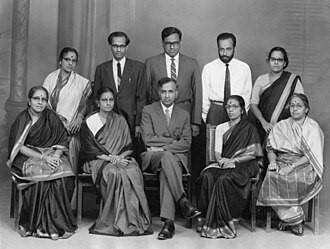
Summary
A diaspora-facing reappraisal of Subrahmanyan Chandrasekhar that treats his life not only as scientific history but as a manual for modern talent: how rigour, resilience and method travel across borders, institutions and eras. It uses his journey to draw actionable lessons for students, families, editors, funders and universities.
Chandrasekhar did far more than set a mass limit for white dwarfs. He built the working grammar of astrophysics and a culture of exactness through books, journals, students and standards, while navigating migration, prejudice and academic politics. The piece argues that his legacy shows how depth, clarity and disciplined pivots create durable influence, and how institutions should protect and enable such excellence.
This cover story revisits Chandrasekhar as the architect of modern stellar theory and as a model of portable excellence for the global Indian community. It follows his early calculation of the famous limit, the bruising public dispute that followed, and a six-decade career in Chicago that produced landmark monographs, a generation of students and an editorial standard for a field. The article links his method to today’s frontiers, from gravitational waves to accretion physics, and translates his life into clear steps for policy and practice. The message is simple: train for method, protect talent, support families, and keep the work clean. Do that, and one calculation on a ship can shape a century.
Editorial note: Biographical and career details in this feature are consistent with standard historical sources and institutional archives on Subrahmanyan Chandrasekhar’s life and work, including catalogued summaries of his research fields, honours, institutional positions, editorship, students trained, and major named legacies such as the Chandrasekhar limit and the Chandra X-ray Observatory.

